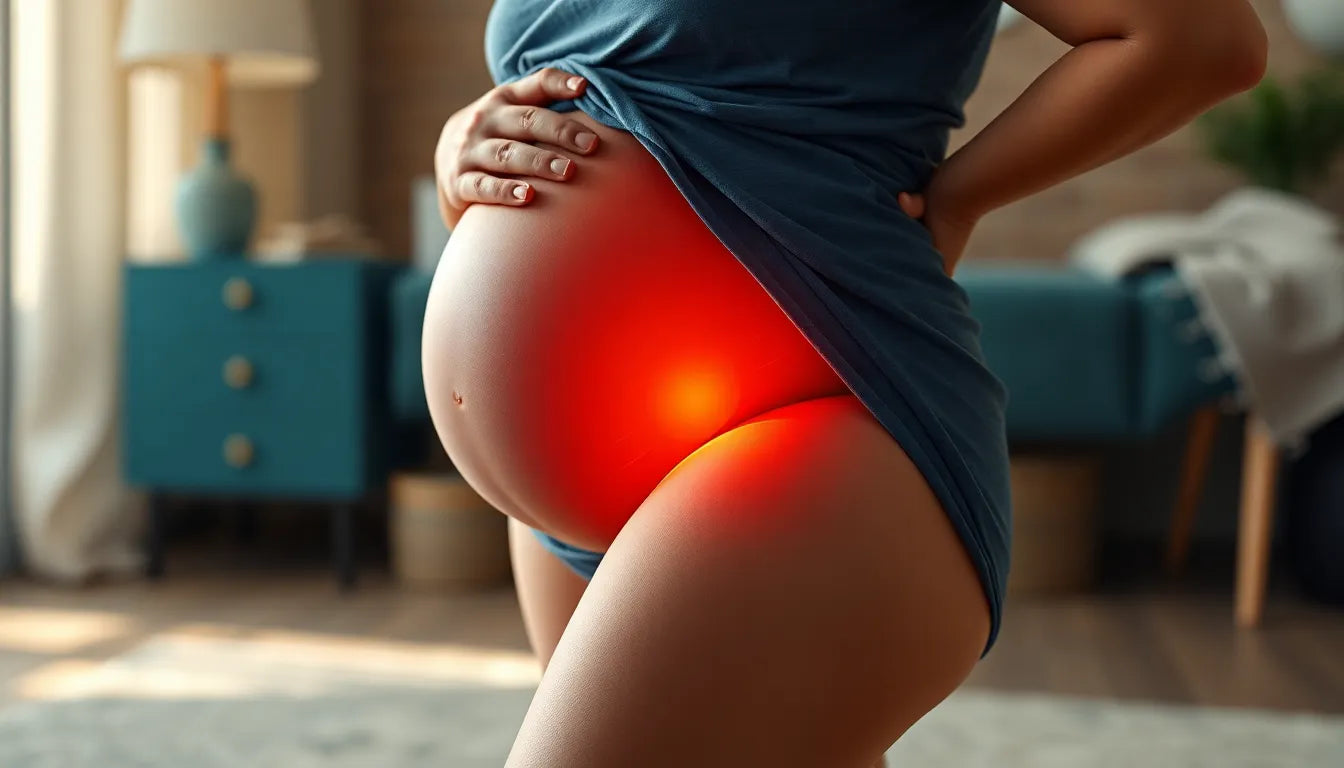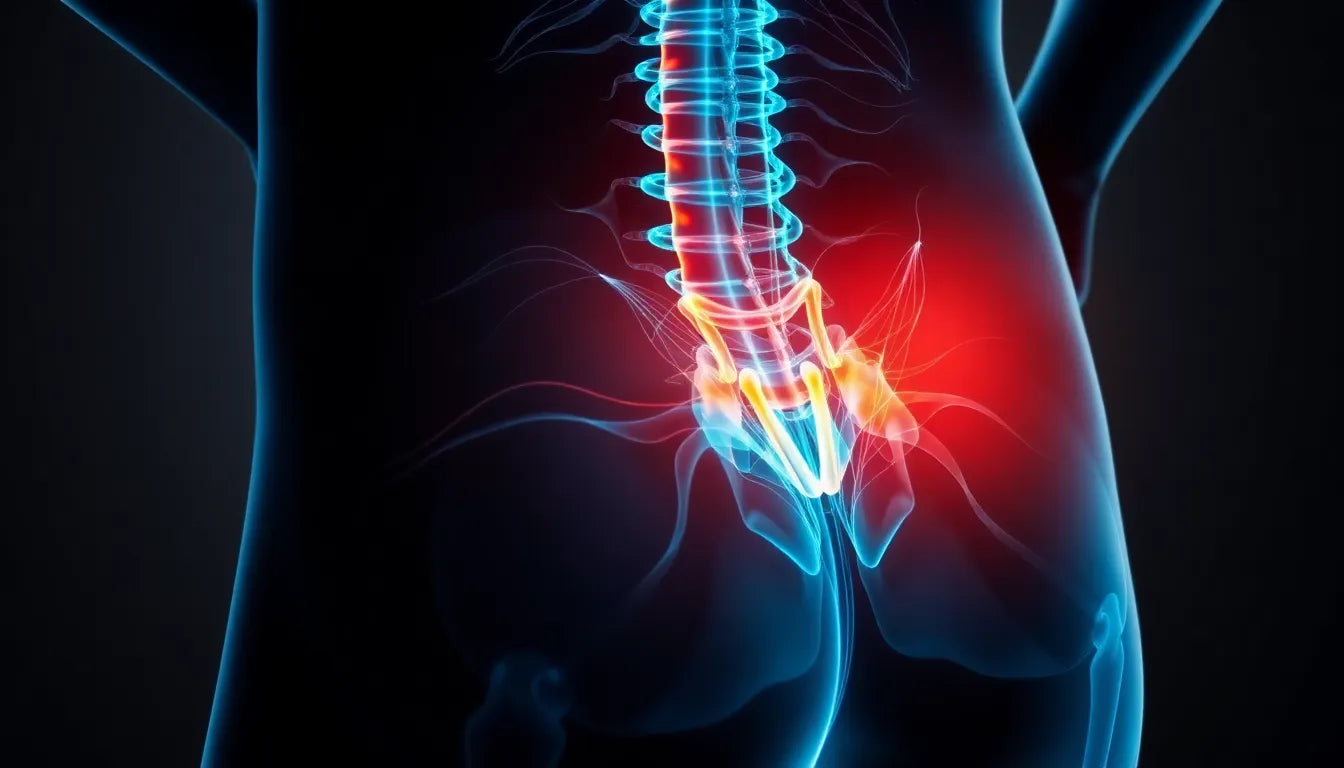Did you know that nearly 80% of people will experience back pain at some point in their lives, often due to herniated discs? This common condition can significantly impact daily life, leading to pain and mobility issues that disrupt even the simplest activities. Understanding how a herniated disc occurs is essential for both prevention and treatment, helping individuals maintain their quality of life.
what is a herniated disc?
A herniated disc, sometimes referred to as a slipped, bulged, or ruptured disc, is a condition where the inner gel-like core of a spinal disc, known as the nucleus pulposus, pushes through a tear or weakness in the outer layer called the annulus fibrosus. This displacement can exert pressure on nearby spinal nerves, leading to symptoms such as pain, numbness, or weakness in the limbs. Recognizing the causes of a herniated disc is crucial as it can lead to significant lifestyle disruptions if not addressed promptly.
importance of understanding the causes
The spine is a complex structure that supports the body and facilitates movement. When a disc herniates, it can cause substantial discomfort and limit mobility, affecting everything from work to recreational activities. By understanding the underlying causes of herniated discs, individuals can take proactive steps to reduce their risk. This knowledge is not just about managing pain but about preserving the ability to engage in daily activities without hindrance.
Herniated discs can stem from various factors, including age-related degeneration, physical trauma, and certain lifestyle habits. Each of these elements contributes to the weakening of the disc structure, making it more susceptible to herniation. With age, discs naturally lose hydration and elasticity, becoming more prone to tears even with minor stress. Additionally, sudden physical trauma or strain, such as improper lifting or twisting motions, can cause immediate disc rupture. Chronic stress due to repetitive movements, prolonged sitting, or obesity can also exacerbate the risk of herniation.
Understanding these triggers is vital for both preventing and managing herniated discs. By identifying risk factors and making informed lifestyle changes, such as maintaining a healthy weight, practicing good posture, and using ergonomic tools, individuals can significantly reduce their chances of experiencing this painful condition. Early intervention and awareness are key to minimizing the impact of herniated discs on one's life.
mechanical breakdown of herniated discs
To fully understand how a herniated disc occurs, it's essential to delve into the mechanical breakdown of spinal discs. Each spinal disc is composed of two primary parts: the nucleus pulposus and the annulus fibrosus. The nucleus pulposus is the soft, gel-like center that provides cushioning and flexibility, while the annulus fibrosus is the tough, outer layer that encases and protects the nucleus. When a disc herniates, the nucleus pulposus pushes through a tear or weakened area in the annulus fibrosus. This extrusion can place pressure on nearby spinal nerves, leading to symptoms such as pain, numbness, or weakness, most commonly in the back, legs, or arms.
primary causes of herniated discs
degeneration with age
Aging is the most prevalent cause of herniated discs, as it leads to natural degeneration. Over time, spinal discs lose water content, becoming less flexible and more prone to tearing or rupturing with even minor stress or movement. This gradual degeneration is often unavoidable and is a normal part of the aging process. As the discs become more brittle, the risk of herniation increases, making age a significant factor in the occurrence of herniated discs.
physical trauma or sudden strain
While aging is a gradual process, physical trauma or sudden strain can lead to immediate disc herniation. Activities that involve heavy lifting, particularly with poor form, twisting motions, or sudden impacts from accidents such as falls or car crashes can cause a disc to herniate. For example, consider a construction worker who lifts heavy objects daily without proper technique. Over time, this repetitive strain can weaken the disc structure, making it susceptible to sudden herniation during a routine task.
chronic stress and lifestyle factors
Chronic stress on the spine due to lifestyle factors also plays a critical role in disc herniation. Repetitive bending, twisting, prolonged sitting, and obesity increase the stress on spinal discs. For instance, individuals with sedentary lifestyles or those who sit for extended periods at work are at higher risk. The lack of movement can lead to weakened muscles and increased pressure on the spine, contributing to the likelihood of a herniated disc. Additionally, excess body weight can add to the burden on the spine, further exacerbating the risk.
risk factors for herniated discs
Understanding the risk factors associated with herniated discs can help in prevention and management. These factors can be categorized into modifiable and non-modifiable types:
- Modifiable risk factors: These include lifestyle choices such as maintaining a healthy weight, quitting smoking, and making ergonomic adjustments to reduce strain on the spine. Implementing regular exercise routines and practicing proper posture can also significantly lower the risk.
- Non-modifiable risk factors: These involve genetic predisposition, age, and occupation. While these cannot be changed, being aware of them can encourage proactive measures to mitigate their impact. For example, individuals with a family history of back problems should be particularly vigilant about maintaining spinal health.
Addressing modifiable risk factors is crucial in reducing the likelihood of experiencing a herniated disc. By making informed lifestyle changes and taking preventive measures, individuals can protect their spinal health and maintain their quality of life.
common locations of herniated discs
Herniated discs most frequently occur in the lumbar spine, or lower back, and the cervical spine, or neck. These areas are particularly vulnerable due to their roles in supporting body weight and facilitating a wide range of movements. The lumbar region bears most of the body's weight, making it susceptible to wear and tear, while the cervical spine allows for head movement, contributing to potential strain. Symptoms can vary depending on the affected area, with lumbar herniation often causing pain that radiates down the legs, and cervical herniation leading to discomfort in the arms and shoulders.
visual aids for understanding
Educational graphics and animations can significantly enhance understanding of how herniated discs affect the spine. These visual tools illustrate the process of herniation, showing how the nucleus pulposus pushes through the annulus fibrosus and impacts spinal nerves. Such resources can help demystify the condition, making it easier for individuals to grasp the mechanics and potential effects on their bodies. By visualizing these processes, people can better appreciate the importance of maintaining spinal health and taking preventive measures.
concluding thoughts on herniated discs
Understanding the hidden triggers of herniated discs is crucial for prevention and management. Recognizing the mechanical breakdown of spinal discs, the primary causes, and the risk factors can empower individuals to make informed lifestyle choices. Early intervention, through lifestyle adjustments such as maintaining a healthy weight, practicing good posture, and using ergonomic tools, can significantly reduce the risk of herniation. By staying informed and proactive, individuals can protect their spinal health and maintain their quality of life.
frequently asked questions
What are the early signs of a herniated disc?
Symptoms of a herniated disc can include localized back pain, pain radiating to the limbs, numbness, or weakness. These symptoms often vary depending on the location of the herniation and the nerves affected.
Can herniated discs heal on their own?
In many cases, herniated discs can improve with rest, physical therapy, and lifestyle changes. However, severe cases may require medical intervention, such as medication or surgery, if symptoms persist or worsen.
How can I prevent a herniated disc?
Prevention strategies include maintaining a healthy weight, practicing good posture, using proper lifting techniques, and engaging in regular exercise to strengthen the back and core muscles. These measures can help reduce stress on the spine and prevent disc herniation.
Is surgery always necessary for a herniated disc?
No, surgery is typically considered a last resort after conservative treatments have been tried. Many individuals find relief through non-surgical methods, but surgery may be recommended if symptoms are severe or do not improve with other treatments.


















